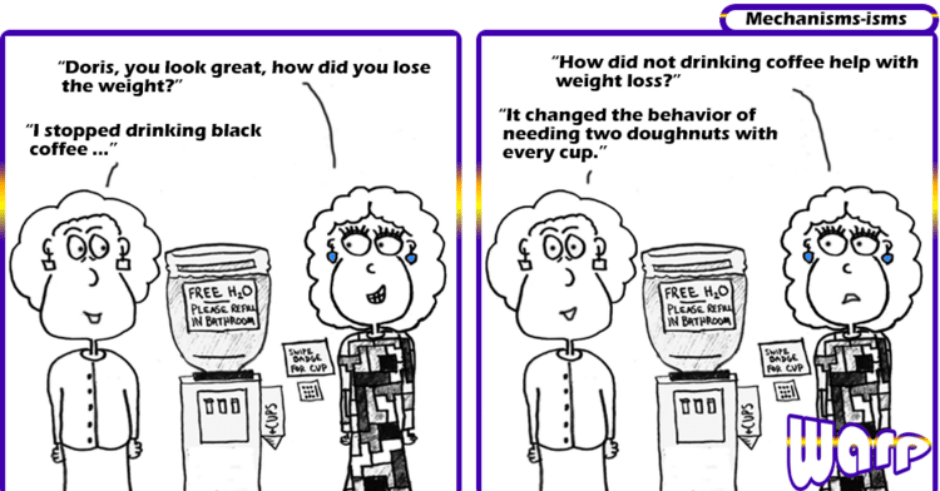All transformations boil down to 2 things – mechanisms and behaviors. This applies to every transformation from dieting to moving a 75,000 person organization to Agile. Mechanisms and behaviors. The mechanism to lose weight is simple, eat healthy food, and just enough for the energy you need. The behaviors are hard; don’t eat that delicious chocolate cake that everyone is enjoying at a party.
If a transformational change was simply a matter of implementing a mechanism, it would be easy. But humans aren’t computers and a myriad of factors can affect the adoption of new mechanisms.
Behavior change makes mechanisms easy. When people embrace new ideas, adopting the mechanism is surprisingly easy. People aren’t stupid and they are amazingly powerful. If they want the change they’ll make the mechanism work for them. If I embrace the idea of eating healthy, I don’t actually need a diet to tell me to have an apple instead of a twinkie.
Mechanisms without behavior change are hard. When you try to implement a mechanism without changing the human behavior, it’s really hard. This is when you hear people say “That diet doesn’t work.” or “Agile didn’t work here.” And then you find out that it didn’t work because people didn’t actually use the mechanisms. No diet plan is going to work if I eat twinkies every day.
What about mechanisms that spark behavior change? The holy grail of all mechanisms is the mechanism that actually drives behavior change. Most mechanisms drive behavior but there’s a chicken and egg problem if you can’t get people to adopt the mechanism their behavior won’t change. A common way to circumvent this problem is the “mandatory mechanism”. It sounds like this “thou shalt follow the process, or you will be fired!” The problem with this approach is a) you need to create more mechanisms to make sure people are following the process and b) people don’t love being ordered around.




